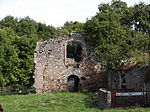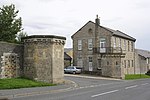St Francis Xavier School, North Yorkshire
Academies in North YorkshireCatholic Church stubsCatholic secondary schools in the Diocese of MiddlesbroughChurch of England secondary schools in the Diocese of LeedsNicholas Postgate Catholic Academies Trust ... and 4 more
Richmond, North YorkshireSecondary schools in North YorkshireUse British English from February 2023Yorkshire school stubs

St. Francis Xavier School is a coeducational secondary school situated on Darlington Road, Richmond, North Yorkshire, England. It is a joint Roman Catholic and Church of England school, serving children and young people aged 11–16 from both denominations and other backgrounds. The headteacher is S Keelan-Beardsley.Previously a voluntary aided school administered by North Yorkshire County Council, in June 2019 St Francis Xavier School converted to academy status. The school is part of a multi-academy trust, Nicholas Postgate Catholic Academy Trust.
Excerpt from the Wikipedia article St Francis Xavier School, North Yorkshire (License: CC BY-SA 3.0, Authors, Images).St Francis Xavier School, North Yorkshire
Darlington Road,
Geographical coordinates (GPS) Address Phone number Website External links Nearby Places Show on map
Geographical coordinates (GPS)
| Latitude | Longitude |
|---|---|
| N 54.4093 ° | E -1.719 ° |
Address
St Francis Xavier School
Darlington Road
DL10 7DA
England, United Kingdom
Open on Google Maps










